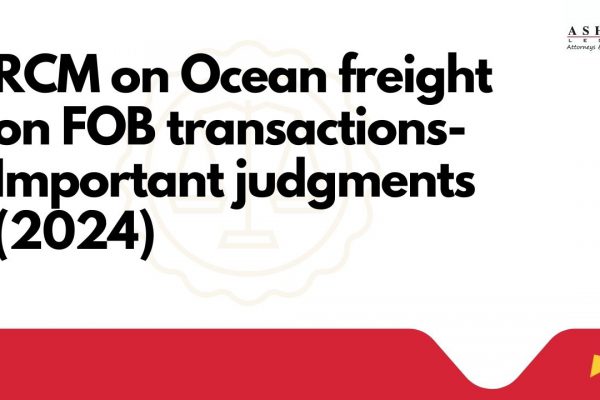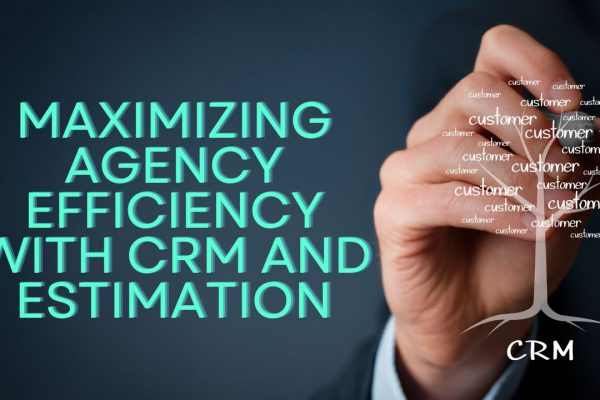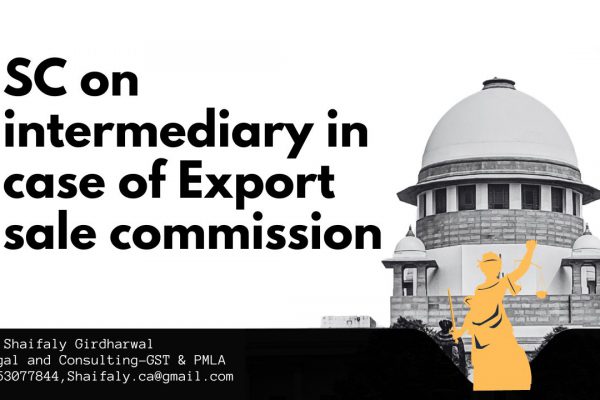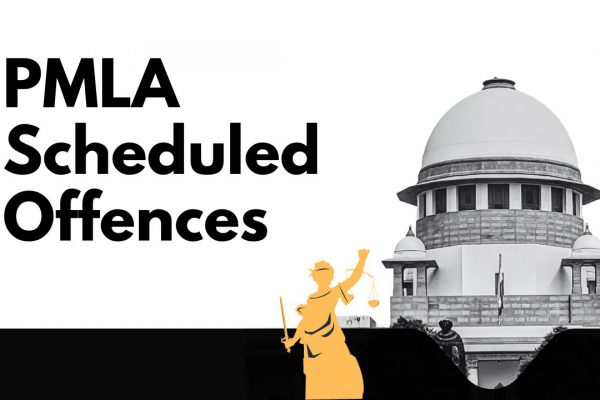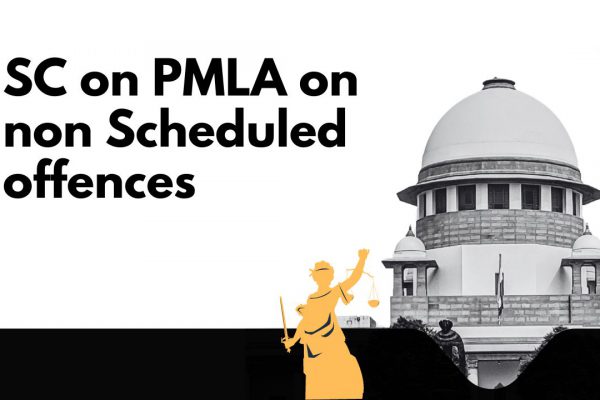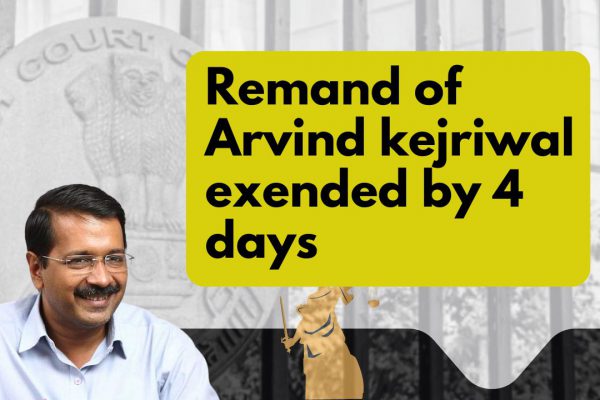335th Issue: 30th January 2022- 5th February 2022
EDITORIAL
Friends,
Recently, a detailed guideline has been issued by The Central Board of Direct Taxes (CBDT) in the matter of how taxes would be calculated on maturity proceeds of ULIPs vide Circular No. 2 of 2022 dated 19th January 2022. The CBDT, which frames policy for the income tax department, had on January 18 notified the rules stating the method of calculation of capital gains with regard to ULIPs with an annual premium of more than Rs 2.5 lakh and subsequently issued a circular the next day charting out various aspects of their taxation.
These guidelines do not bring any new taxation provision but only clarify the method of calculation of capital gains when it comes to redeeming ULIPs in specified cases.
The renewal premiums paid on ULIPs bought before February 1, 2021, will continue to be tax-exempt. A year after the tax exemption on maturity proceeds of ULIPS on annual premiums of over Rs 2.5 lakh was removed in Budget 2021, the Central Board of Direct Taxes (CBDT) issued detailed rules on how taxes would be calculated.
The Finance Act of 2021 carried out amendment in section 10(10D) of the Income-tax Act following which the sum received under ULIPs issued on or after Feb 1, 2021, shall not be exempt if the annual premium payable for any year exceeds Rs 2.50 lakh.
The CBDT recently framed rules on determining the taxability of ULIPs proceeds in various scenarios. There were still challenges pertaining to the methodology to be followed for the purpose of taxing such ULIP proceeds. In the circular, the CBDT has provided several illustrations to clarify the taxability of ULIPs.
Maturity proceeds received under such high-value ULIPS purchased after February 1, 2021, will not be tax-free under section 10(10D), as was the case earlier. If there are multiple ULIPs, the aggregate premium paid will be taken into account.
Under the Income Tax Act, 1961, section 10(10D) allows this tax break on maturity proceeds provided the death benefit is at least 10 times the annual premium. The renewal premiums paid on ULIPs bought before February 1, 2021, will continue to be tax-exempt.
Similarly, dependents will not have to pay any tax on any claim amount received after the policyholder’s death. The circular also clarified that, in the case of multiple ULIPs, the aggregate premiums paid during the year will be factored in, so you cannot bypass the limit by buying several policies with an annual premium of under Rs 2.5 lakh. But, if you have multiple policies, the option most beneficial to you will be considered while computing this limit.
SYNOPSIS
| S.NO. | TOPICS | PAGE NO. |
| 1] | TAX CALENDAR | 4 |
| 2] | INCOME TAX | 5 |
| NOTIFICATION | AMENDMENT IN NOTIFICATION ISSUED FOR CENTRAL GOVERNMENT SPECIFIED THE SOVEREIGN WEALTH FUND NAMELY, THE MIC REDWOOD 1 RSC LIMITED, ABU DHABI, UNITED ARAB EMIRATES | |
| 3] | GST | 6 |
| ADVISORY | ADVISORY ON INTEREST CALCULATOR IN GSTR-3B | |
| 4] | FEMA | 7 |
| DISCUSSION | UNDERSTANDING FOREX TRANSACTIONS WITH ASSOCIATED RISKS
|
|
| 5] | CUSTOMS | 8 |
| CIRCULAR | Retention of ISO Containers to meet future requirements
|
|
| 6] | DGFT | 9 |
| POLICY CIRCULAR | CLARIFICATION REGARDING SIMS | |
| 7] | GST PLEADING AND PRACTICE: WITH SECTION-WISE GST CASES & GST NOTICES AND THEIR REPLIES
|
10 |
| 8] | LET’S DISCUSS THIS FURTHER | 11 |
TAX CALENDAR
| Due Date | Form/Return/Challan | Reporting Period | Description |
| 30th January | TDS Certificate (Form 16B) | December 2021 | The due date for furnishing challan-cum-statement in respect of tax deducted under section 194-IA is in the month of December 2021. |
| 30th January | TDS Certificate (Form 16C) | December 2021 | The due date for furnishing challan-cum-statement in respect of tax deducted under section 194-IB is in the month of December 2021. |
| 30th January | TDS Certificate (Form 16D) | December 2021 | The due date for furnishing challan-cum-statement in respect of tax deducted under section 194-IM is in the month of December 2021. |
| 30th January | December 2021 | Quarterly TCS certificate in respect of the quarter ending December 31, 2021. | |
| 31st January | FORM-16A | October to December 2021 | Quarterly statement of TDS for the quarter ending December 31, 2021. |
| 31st January | FORM 15G/FORM 15H | October to December 2021 | Quarterly return of non-deduction at source by a banking company from interest on time deposit in respect of the quarter ending December 31, 2021. |
| 31st January | Form No- 3CEAC | December 2021 | Intimation under section 286(1) in Form No. 3CEAC, by a resident constituent entity of an international group whose parent is a non-resident. |
INCOME TAX
NOTIFICATION
AMENDMENT IN NOTIFICATION ISSUED FOR Central Government specifieD the sovereign wealth fund namely, the MIC Redwood 1 RSC Limited, Abu Dhabi, United Arab Emirates.
OUR COMMENTS: Central Government vide notification number 11/2022 dated 25th January 2022, hereby make the following amendment in the notification of the Government of India, Ministry of Finance (Department of Revenue), Number 89 of 2020, published in the Gazette of India, Extraordinary, Part-II, Section 3, Sub-section (ii), vide number S.O. 3952(E), dated the 2nd November 2020, namely:-
In the said notification,-
(I) for clauses (vii), (viii), (ix), (x), (xi) and (xii), the following clauses shall be substituted, namely:-
“(vii) the earnings of the assessee shall be credited either to the account of the Government of Abu Dhabi or to any other account designated by that Government so that no portion of the earnings inures to any private person barring any payment made to creditors or depositors for loan or borrowing [as defined in sub-clause (a) of clause (ii) of Explanation 2 to clause (23FE) of section 10 of the Act] taken for the purposes other than for making an investment in India;
(viii) the assessee shall not have any loans or borrowings [as defined in sub-clause(a) of clause (ii) of Explanation 2 to clause (23FE) of section 10 of the Act], directly or indirectly, for the purposes of making an investment in India;
(ix) the asset of the assessee shall vest in the Government of Abu Dhabi upon dissolution barring any payment made to creditors or depositors for loan or borrowing taken for purposes other than for making the investment in India;
(x) the assessee shall not participate in the day to day operations of the investee (as defined in clause (i) of Explanation 2 clause (23FE) of section 10 of the Act) but the monitoring mechanism to protect the investment with the investee including the right to appoint directors or executive director shall not be considered as participation in the day to day operations of the investee.”;
(II) for the Annexure, the substituted Annexure is mentioned in the notification.
GST
ADVISORY
ADVISORY ON INTEREST CALCULATOR IN GSTR-3B
Our Comments: The GST portal introduced Interest calculator on 26th January 2022 vide their latest Advisory:
- To facilitate taxpayers in doing self-assessment, the new functionality of interest calculator is being released in GSTR-3B. This functionality will assist taxpayers in calculating the interest applicable for delayed filing of returns. Taxpayers will have to verify and discharge the correct interest liability as per law, as payment of interest is a statutory compliance.
Interest computation.
- The interest computed by the system has been aligned with Section-50 of the CGST Act, 2017, as amended. Consequently, interest liability for respect of supplies made during the tax period pertaining to the GSTR-3B being filed will be calculated only on that portion of the tax which is paid by debiting the electronic cash ledger, i.e., the net tax paid in cash. However, with respect to the supplies pertaining to the previous tax period(s) being declared in later GSTR-3B, the interest will be computed for the entire liability.
Auto-population of system computed interest:
- Furnishing tax-period-wise break-up in GSTR-3B: The return in FORM GSTR-3B allows taxpayers to discharge tax liability for previous tax periods also, in addition to the tax liability for the present period. However, the tax-period-wise break-up of the tax liability is not available in GSTR-3B.
- This new functionality will compute the interest applicable on the basis of the values declared by the taxpayers in GSTR-3B for a particular tax period assuming that the entire liability belongs to that tax period. This system computed interest will be auto-populated in Table-5.1 of GSTR-3B for the next tax period, the way it is done for the Late fees at present.
- The system computed interest values auto-populated in the next GSTR-3B return will be kept editable. However, the system-generated PDF of filed GSTR-3B will contain both values: the System computed interest, and the user paid interest values.
- To enable taxpayers to pay interest on supplies of past periods declared in a GSTR-3B, if any, a new button has been added in GSTR-3B, called ‘Tax Liability Breakup, as applicable’, and data is to be entered by clicking this button only by those taxpayers who are making payment for liability pertaining to earlier tax-periods in the present GSTR-3B. In cases where the present GSTR-3B consists of liability only for the present period, the taxpayers can ignore this button, and continue filing their return as usual.
Changes in user experience:
- After the interest calculator is enabled on the GST Portal, there will be no change in the user experience for the taxpayers. For those who have filed the previous return after the due date, the interest would be auto-calculated and populated assuming that the entire liability pertained to that tax period. The taxpayer would still have the facility to provide the break-up of liability of the past period(s) to pay the correct interest using the ‘Tax Liability Breakup, as applicable’ button. For details of declaring tax-period-wise tax liability, please refer to the Annexure in the portal www.gst.gov.in.
- This facilitation measure is expected to assist the taxpayers by helping them with the calculation of correct interest while filing of GSTR-3B and will thus improve ease in filing returns under GST.
9. This functionality will be made available on the GST Portal shortly, and the same will be intimated to the taxpayers. The details about functionality on the computation of the interest, along with sample screenshots, are as per the Annexure provided in the Advisory.
FEMA
DISCUSSION
Understanding Forex Transactions with Associated Risks
OUR COMMENTS: Foreign exchange transaction refers to converting currency of one country to that of the other to settle payments. Risk is an integral part of every forex transaction. But, it can be minimised and the investor can gain greater control over the profits and losses of the trade if a strategic and planned approach is followed. Forex Transactions indicate the sale and purchase of foreign currencies. It is an agreement of exchanging currency of one country for the currency of the other at an agreed exchange rate on a pre-determined date.
Different types of foreign exchange transactions:
- Forward Transaction In forward transactions, the buyer and seller agree to sell and purchase currency after 90 days of the agreement at a fixed exchange rate called Forward Exchange Rate on a pre-determined date. Forward transactions take place in the forwarding Market.
- Future Transaction
The primary mechanism of future transactions is similar to that of forwarding transactions. However, future transactions are more rigid and standardized as compared to forward transactions in terms of features, date, and size. Also, an opening margin is fixed in future transactions and kept as collateral to establish a future position.
- Option Transactions
Under option transactions, an investor acquires the right to exchange the currency in one denomination to another at a fixed exchange rate on a pre-determined date. However, he is not obligated to exercise the option. An option to buy the currency is called a Call Option while selling the currency is called a Put Option.
- Swap Transactions
Synchronous borrowing and lending of two different currencies between two investors come under the definition of swap transactions. Here, the agreement consists of exchanging principal and interest payments on a loan made in one currency for principal and interest payments of a loan of equal value in another currency. The obligation to refund the currencies is used as collateral, and the amount is repaid at a forward rate.
- Arbitrage
Arbitrage refers to buying a foreign currency in one market and simultaneously selling it in the other at a higher price, thereby allowing investors to make profits from the difference in the exchange rate prevailing simultaneously in different markets.
- Spot Transaction
The fastest way of exchanging currencies is transacting in Spot Market. Under spot transactions, the exchange of currencies is settled between buyer and seller within two days of the deal to enter into such transaction. In spot transactions, the currencies are exchanged at the prevailing rate known as Spot Exchange Rate.
CUSTOMS
CIRCULAR
Retention of ISO Containers to meet future requirements
OUR COMMENTS: The board vides Circular No 01/2022 dated 18th January 2022 drew Kind attention to Board’s Instructions Nos.07/2021- Customs dated 24.04.2021, 08/2021- Customs dated 27.04.2021 and 12/2021- Customs dated 25.05.2021 relating to relaxation of various procedures relating to the facilitation of COVID related consignments.
Board has received representations through the Department for Promotion of Industry and Internal Trade (DPIIT), Ministry of Commerce and Industry, for providing relaxations in the re-export of ISO Containers imported temporarily for combating the COVID Pandemic. Such containers have been used for efficient transportation of Liquid Medical Oxygen due to the inherent advantage related to multi-modal transportation (by Road/Rail/Waterways/Airways).
The issue has been examined. Board hereby guides all the field formations to allow extension of the time period for re-exports of ISO containers meant for transportation of Liquid Medical Oxygen grade, if imported under Notification No. 104/1994-Customs dated 16.03.1994, till 30.09.2022, upon receipt of requests from the importers, in this regard.
Further, in respect of ISO Containers imported on lease by availing IGST exemption under serial number 557B of Notification No.50/2017-Customs dated 30.06.2017, it is hereby clarified that as long as ISO containers are in India under a valid lease and the IGST amount is paid on such lease amount under CGST law, the IGST is not required to be paid on the value of the ISO containers, and in such a situation the need for re-export would not arise.
Any difficulty in the implementation of this Circular may be brought to the notice of the Board.
DGFT
POLICY CIRCULAR
CLARIFICATION REGARDING SIMS
OUR COMMENTS: The department issued policy circular number 38/2015-2020 dated 19th January 2022 which stated that Subsequent to the issuance of Notification No.33/2015-2020 dated 28.09.2020 amending import policy of all HSN Codes under Chapter 72, 73, and 86 of Schedule -I (Import Policy) of ITC (HS) from ‘Free’ ‘to ‘Free subject to compulsory registration under Steel Import Monitoring System (SIMS), DGFT has received various representations from members of Trade & Industry seeking clarification on SIMS.
- The issues were referred to M/O Steel and based upon their clarification, responses thereto are given below:
- Whether re-import of goods for packaging purposes falling under HS codes of Chapters 72, 73and 86of ITC (HS), 2017 is also covered under the scope of SIMS?
Response: Re-import of steel for packaging purposes will not be covered under SIMS as it is not primarily meant for value addition, rather being re-imported for packaging only.
- Whether SIMS Registration is required if the steel/steel item is exported from DTA to SEZ and then imported from SEZ to DTA when [i] the item is being imported to DTA without any value addition and [ii] the item is being imported to DTA after some value addition?
Response: In both cases i.e.
[i] if the steel /steel item is exported from DTA to SEZ and then imported into DTA from SEZ without value addition, or
[ii] with value addition, there should be no requirement for SIMS registration.
This issues with the approval of the competent authority.
If you already have a premium membership, Sign In.
 CA Vivek Jalan
CA Vivek Jalan
Vivek Jalan, from Tax Connect, is a Chartered Accountant & a qualified L.LM & LL.B. He is The Chairman of The Ease of Doing Business Committee therein. He is a member of The Confederation of Indian Industries (CII)- Economic Affairs & Taxation Committee. He is the Member of The Consultative Committee of The Commissioner of SGST. He is also The Member of The Regional Advisory Committee of The Chief Commissioner of CGST. He is advising Large MNCs, PSUs & PAN India Organizations in GST & Income Tax and has offices in Kolkata, Delhi, Bangalore, Mumbai & now Surat. He is a regular Columnist and guest expert in Economic Times, Times of India, Dalal Street Journal, Money Control, Live mint, CNBC, Hindustan Times, Zee Business, Financial Express, other dailies, and business magazines like Business Today, etc. He is also a guest expert on Taxation matters in All India Radio and other media platforms. He is the Editor of Weekly Bulletin TAX CONNECT, a publication on Indirect Taxes and Direct Taxes which reaches more than 70000 professionals.


